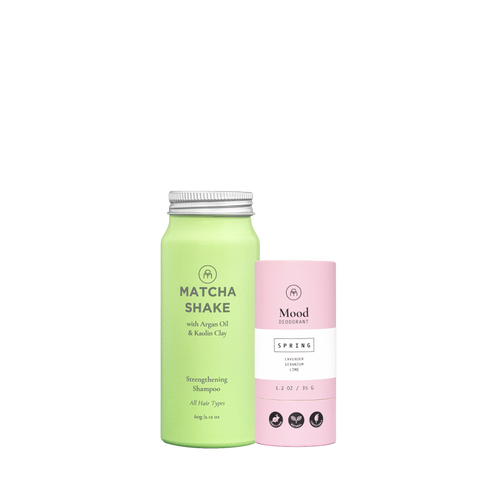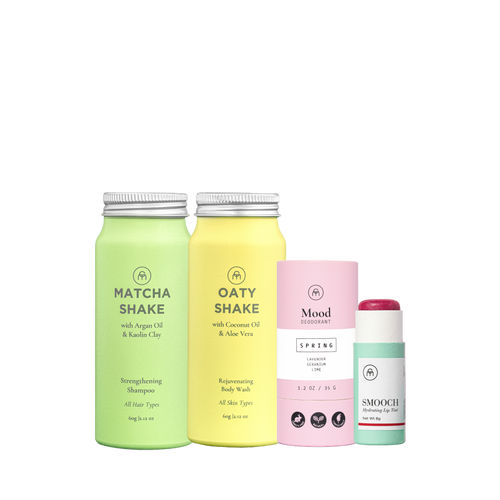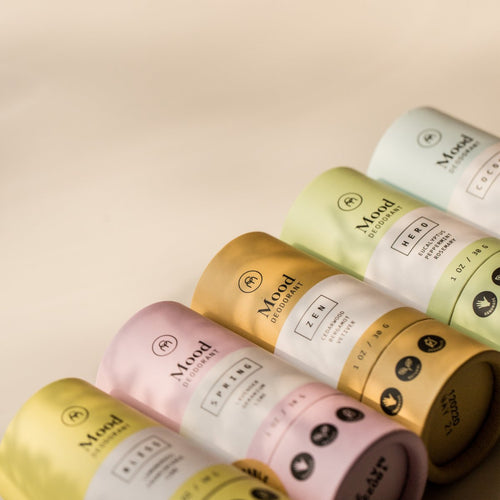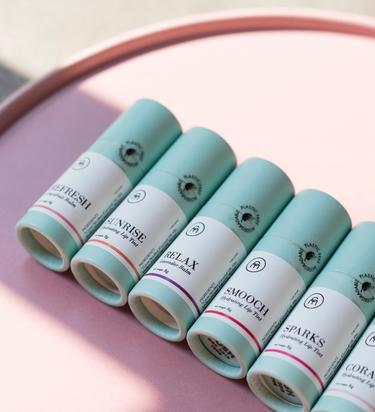
Coconut Oil: Sustainable Skincare Journey
Coconut oil is a special ingredient that is great for our skin. It's not just good for you, it's also kind to our planet. That makes it a star in beauty products that care about nature.
I first found out how amazing coconut oil is when I was a new mom. I needed gentle, natural products for my baby's skin. Then, I found coconut oil. It was perfect for helping with nappy rashes, cradle cap and for making hair healthy as well as looking nice and shiny. When I started using it for myself, it helped me with my skin problems, like acne and dry skin.
But finding coconut oil did more than just help with skin problems. It made me think about how important it is to make choices that are good for our planet. That's why I started Coconut Matter. Our goal is to make personal care products with coconut oil that are good for you and good for the Earth.
In this blog post, we will talk about why coconut oil is so great, look at the science that explains why it works so well, and understand why it's so important for nature-friendly skincare. Whether you're a new mom, someone who loves skincare, or a person who cares about your health and our planet, you will find something interesting. So, let's start this journey together and learn about the wonders of coconut oil.
Natural Baby Care: Organic Coconut Benefits
When my baby Jade was born, I wanted to find the best and most natural things to take care of her skin. That's when I found out about coconut oil. This lightly scented oil comes from coconuts and it's all-natural. I learned that it was not only safe for babies but also very good for their skin.
One of the first things I noticed was how organic coconut oil helped with Jade's nappy rash. The rash would make her skin red and sore, and I didn't like seeing her uncomfortable. But when I started using coconut oil, the rash quickly got better. The oil was gentle and didn't hurt her skin. Plus, it made her skin feel soft and smooth.
Not only was virgin coconut oil good for Jade's skin, it was also great for her hair. I started using coconut oil to massage Jade's scalp. It made her hair shiny and healthy. It was like a special treat for her hair and she seemed to enjoy it a lot!
Every evening, I also used coconut oil to massage Jade's tummy. It soothes and calms her, and I loved the special connection we shared during these moments. It became our little bedtime ritual, something we both looked forward to.
The best part was that coconut oil was not only good for Jade, but it was also good for my wallet. It was a great value for money because a little bit went a long way. I also loved that it came in a glass jar instead of a plastic bottle. That made me feel good because I knew I was making a better choice for our planet.
Finding out about coconut oil was like finding a hidden treasure. It was so good for Jade's skin and hair, and it was natural and safe. As a new mom, that made me feel really good. And that's how my journey with coconut oil began.
Coconut Oil: An Unlikely Hero for Adult Skin Care
I have had cystic acne since I was young. My siblings have it too. It makes red bumps on my skin around lymph nodes. It can get really big and hurt a lot. It made me feel embarrassed, but I didn't want to rely on the steroid cream that my skin doctor prescribed.
I remembered how well organic coconut oil worked on soothing nappy rashes, so I decided to learn more about it. I found out that more than half of coconut oil is made of a bioactive compound called lauric acid. Lauric acid is known for its anti-bacterial and anti-inflammatory properties; it can get rid of bacteria and viruses. So, I thought, why not try coconut oil on my cystic acne?
And guess what? It really helped! The red bumps didn't disappear all at once, but they got better. The best part was, I noticed less marks left by the acne. Also, coconut oil made my skin feel soft. It soaked right into my skin, which felt really nice. So, I started using it all over my body to make my skin soft.
One day, a customer told me about the Ayurvedic practice of cleansing the mouth with oil called oil pulling. This is when you swish oil in your mouth, like mouthwash. It sounded weird, but I had a problem with my gums. They were swollen and sore. I didn't want to go to the dentist, so I decided to try oil pulling with coconut oil. Every morning, I swished the oil in my mouth for 10 minutes. After a week, my gums got better! Oil pulling really does work!
And that's how coconut oil became my superhero for taking care of my skin. But the story doesn't end there. This experience made me curious, and I wanted to learn everything about coconuts. Could there be even more amazing things that I didn't know yet? That's what I was going to find out in my next adventure with coconuts.
Understanding Coconut Oil's Magic
After seeing how coconut oil helped my skin and gums, I wanted to learn all about coconuts. I started reading and discovering why coconut oil is so good for the skin. It was like unveiling the magic of coconuts!
Coconut oil is like a treasure chest of goodness for our skin. But why? The answer is in the science behind coconut oil. It has bioactive compounds that help our skin. Two of these compounds are especially important.
The first one is called Lauric acid. More than half of coconut oil is made up of Lauric acid1. This is great because Lauric acid can fight off bad bacteria1. It's like a superhero that defends our skin from germs. That's why it helped make my acne and my sore gums better.
The second important compound in coconut oil is its medium-chain fatty acids (MCFA). These are special kinds of fats that our skin loves2. They help keep our skin moisturised and make it feel soft2. That's why coconut oil felt so nice on my skin.
So, now we know the secret of coconut oil. It's not magic, but science! And the best part is, this science is all-natural. That means it's safe for us to use and good for our planet too. I'm so glad I decided to learn all about coconuts. I hope you find it as fascinating as I do!
Coconut: The Tree of Life
But there's more to the story of coconuts. They come from a wonderful tree known as the "Tree of Life" - the coconut tree. This tree is a superhero for many islands on our planet. It helps protect the soil from washing away and gives a home to many animals. It also cleans our air by taking in bad air and giving out good air.
In the Pacific Islands, coconut trees are very special. For example, in the Solomon Islands, when a child is born, the father plants a coconut tree for them. This tree will provide the child with food, drink, and even materials to build their home. Coconut trees are also a big part of their big celebrations, like weddings.
What's more, when we use things made from coconuts, like coconut oil, we're being friends with our planet. That's because coconut trees keep growing and giving. So, using coconut products is a good choice for our planet.
Now we know why coconut trees are called the "Tree of Life". They do so much good for us and our planet. And they give us wonderful things like coconut oil. Isn't it amazing what one tree can do? I hope you find it as fascinating as I do!
Founding Coconut Matter: A Mission Inspired by a Fruit
Speaking of fascination, let me share a very personal story with you. A story that started with my little girl, Jade, and led to the creation of Coconut Matter.
I've always been amazed by coconuts. But the real magic started when I became a mum. I saw how coconut oil helped Jade. It made her skin feel nice and soft. And the best part? It was all-natural. That meant it was safe for Jade and good for our planet too. This made me very happy.
As a mum, I'm always looking for safe and effective natural products. Coconut oil checked all those boxes and more. It was not just good for Jade but for the whole family! We could all use it as a moisturiser.
When I decided to spend more time at home and "retire" from my professional life, an idea came to me. I wanted to share the goodness of coconut oil with everyone. And not just that, I also wanted to help the people where coconuts come from - the Pacific Islanders.
So, I started Coconut Matter. We work with social-enterprise partners in Australia to get our coconut oil from the Solomon Islands. This way, we can help the people there too. We make sure our oil comes from coconuts that are grown in a way that's good for the Earth. And we want everyone to know how amazing coconuts are.
The Wonders of Coconut Oil in Skin Care Products
Have you ever noticed how many skin care products have coconut oil in them? It's a lot! And there's a good reason for that. Coconut oil is like a magic potion for our skin. It helps keep our skin feeling soft, smooth, and healthy. And the best part? It's all-natural! This means it's safe for us and good for our planet.
At Coconut Matter, we know all about the wonders of coconut oil. That's why it's a star ingredient in all our products. From natural deodorants and tinted lip balms, to shampoo, body wash, and even insect repellent - coconut oil is at the heart of everything we do!
So, how do you choose a good coconut oil product? Here are some tips:
1. Look for "organic, cold-pressed" on the label. This means the organic coconut oil is made in a way that keeps all its bioactive compounds.
2. Check where the coconuts come from. At Coconut Matter, our coconuts come from the Solomon Islands. We know how and where they're grown and the oil is made in a good way for the Earth.
3. Try to find "unrefined" coconut oil. This is coconut oil in its most natural state. It has all its benefits and a nice coconut smell.
Adding coconut oil to your daily skin care routine is easy. Here’s 3 simple ways!
1. Makeup Remover:
Coconut oil can be an effective and natural makeup remover. Apply a small amount to a cotton pad and gently wipe over your face. The oil helps to break down even the most stubborn waterproof makeup while hydrating your skin.
2. Hair Mask:
For a deep conditioning hair treatment, warm up a few tablespoons of coconut oil (make sure it's not too hot to touch), then apply it to your hair from roots to tips. Wrap your hair in a towel or shower cap and leave it on for at least 30 minutes, or overnight for best results. Rinse thoroughly afterwards and enjoy your shiny, soft locks.
3. Armpit Scrub:
Coconut oil can also be used to create a natural and gentle armpit scrub. Mix coconut oil with some sugar to create a paste. Apply this mixture to your armpits and gently scrub. This helps to exfoliate the area, remove dead skin cells, and can even help with any minor skin discoloration. This can be especially helpful if you're transitioning to a natural deodorant. Rinse off the scrub in the shower.
Coconut Oil: Discover Your Skincare Secret
Coconut oil has been my secret skincare weapon. It's the hidden gem in all our products - deodorants, lip balms, shampoos, body washes, and even insect repellents! As an all-natural ingredient, coconut oil is not only safe for us but also kind to the Earth.
I invite all of you to uncover the secret and experience the benefits of coconut oil. It's simple to use, and the results are absolutely amazing. It's no wonder why this secret ingredient is becoming a staple in so many of our daily skincare routines.
But the journey with coconut oil extends beyond creating fantastic skincare products. It's also about nurturing our planet. By choosing products like those at Coconut Matter, we're saying "yes" to sustainability. We're making a choice that's beneficial for us and the Earth.
References:
-
Nakatsuji, T., Kao, M. C., Fang, J. Y., Zouboulis, C. C., Zhang, L., Gallo, R. L., & Huang, C. M. (2009). Antimicrobial Property of Lauric Acid Against Propionibacterium Acnes: Its Therapeutic Potential for Inflammatory Acne Vulgaris. Journal of Investigative Dermatology.
-
Varma, S. R., Sivaprakasam, T. O., Arumugam, I., Dilip, N., Raghuraman, M., Pavan, K. B., ... & Paramesh, R. (2018). In vitro anti-inflammatory and skin protective properties of Virgin coconut oil. Journal of Traditional and Complementary Medicine.
Frequently Asked Questions
How can I tell if my deodorant is causing a rash?
You can identify a deodorant rash by looking for signs on your skin where you apply your deodorant. These signs, or deodorant irritation symptoms, can include:
- Your skin having a different colour or looking red or inflamed
- Feeling itchy or like it's burning 🔥
- Seeing little bumps or swelling
- Dry or peeling skin
It's important to differentiate between a deodorant rash and other skin conditions. To figure out how to tell if deodorant is causing a rash, think about these questions:
- Is the rash localized to the area of application?
- Did the rash show up after you started using a new deodorant?
- Did the rash start even though you've used the same kind of deodorant for a while?
At Coconut Matter, we know that sometimes a rash can appear even with a deodorant you've used for a long time. This can be due to too much being applied, or if the deodorant was applied immediately after shaving, or if it was used with another skin product such as whitening toner or glycolic acid.
To keep rashes away, just use a little bit of deodorant, don't put it on right after you shave, and don't mix it with other strong skin products. If you get a rash, stop using the deodorant and see if the rash gets better. If it still doesn't, you might want to chat with a skin doctor.
Is it safe to use deodorant on broken or irritated skin?
Understanding the right frequency for deodorant application is essential for maintaining fresh underarms and preventing discomfort. At Coconut Matter, we value the importance of tailor-fitting your deodorant routine to suit both your skin's unique needs and the specific formulation of the product you choose.
The effectiveness of deodorant not only hinges on individual skin chemistry but also on the product's formulation. Typically, once-a-day application is enough to keep you smelling fresh from dawn to dusk 🌅 to 🌃 and avoid rashes caused by overuse. Nevertheless, the optimum number of times to apply deodorant will vary from one individual to another, depending on lifestyle and personal preference. In addition to your morning routine, you may feel the need for a refresh after a midday workout 🏋️♂️ or before a social event 🎉.
When considering deodorant usage to prevent rashes, it's important to apply the product cautiously. Our MOOD natural deodorants, for instance, are highly concentrated, and a little goes a long way. Excessive use can lead to irritation, so if you require more than the standard once-a-day, ensure your underarms are clean and dry before reapplying.
Different deodorant types—such as roll-on, spray, or stick—have varying application frequencies. Roll-on and stick deodorants typically provide lasting coverage with just one application, while sprays may need a quick reapplication due to their lighter consistency. Regardless of the form, overuse can potentially lead to sensitivity, so moderation is key.
- Roll-on 🔄: Typically one application per day is sufficient.
- Spray 💨: May require a quick reapplication, especially if it's a lighter formula.
- Stick 🚫: Designed for lasting coverage with a single application.
If you experience any sensitivity, consider this as feedback from your skin, and adjust your usage accordingly. Finding the right balance in the quantity and frequency of deodorant application is the best way to keep you feeling confident and your skin irritation-free.
Remember, everyone's body chemistry is unique, so listen to yours and adjust your deodorant application accordingly. 👂🧴
How often should I apply deodorant to avoid getting a rash?
Understanding the right frequency for deodorant application is essential for maintaining fresh underarms and preventing discomfort. At Coconut Matter, we value the importance of tailor-fitting your deodorant routine to suit both your skin's unique needs and the specific formulation of the product you choose.
The effectiveness of deodorant not only hinges on individual skin chemistry but also on the product's formulation. Typically, once-a-day application is enough to keep you smelling fresh from dawn to dusk 🌅 to 🌃 and avoid rashes caused by overuse. Nevertheless, the optimum number of times to apply deodorant will vary from one individual to another, depending on lifestyle and personal preference. In addition to your morning routine, you may feel the need for a refresh after a midday workout 🏋️♂️ or before a social event 🎉.
When considering deodorant usage to prevent rashes, it's important to apply the product cautiously. Our MOOD natural deodorants, for instance, are highly concentrated, and a little goes a long way. Excessive use can lead to irritation, so if you require more than the standard once-a-day, ensure your underarms are clean and dry before reapplying.
Different deodorant types—such as roll-on, spray, or stick—have varying application frequencies. Roll-on and stick deodorants typically provide lasting coverage with just one application, while sprays may need a quick reapplication due to their lighter consistency. Regardless of the form, overuse can potentially lead to sensitivity, so moderation is key.
- Roll-on 🔄: Typically one application per day is sufficient.
- Spray 💨: May require a quick reapplication, especially if it's a lighter formula.
- Stick 🚫: Designed for lasting coverage with a single application.
If you experience any sensitivity, consider this as feedback from your skin, and adjust your usage accordingly. Finding the right balance in the quantity and frequency of deodorant application is the best way to keep you feeling confident and your skin irritation-free.
Remember, everyone's body chemistry is unique, so listen to yours and adjust your deodorant application accordingly. 👂🧴
How can I soothe underarm skin after a rash has occurred?
If you've developed a rash under your arms, you may be looking for effective methods for soothing underarm rash. Below are seven steps for post-rash skin care to help in treating skin after deodorant rash:
- Put the Deo on Hold: First things first, halt the roll-ons and sprays. When treating skin after deodorant rash, giving your underarms a breather from any deodorants or antiperspirants is a must.
- Gentle Cleansing: Clean your underarms with a mild, fragrance-free soap and cool water. Pat the area dry softly, avoiding any harsh rubbing that can worsen the rash.
- Soothing Application: For immediate relief, apply anti-inflammatory substances such as aloe vera gel or coconut oil. These natural remedies are excellent for soothing underarm rash and providing moisture.
- Soft Clothing: Dress in loose, soft clothing made from natural materials like cotton. This helps reduce friction and lets your skin breathe, which is crucial for post-rash skin care.
- Rash Relief: Apply an over-the-counter hydrocortisone cream if needed, following the package instructions, to alleviate itching and inflammation.
- Keep Cool: Avoid activities that induce sweating. Staying cool is essential to prevent further irritation of the rash.
- Professional Advice: If the rash persists or if you often experience rashes, it's important to consult with a healthcare professional for personalised care.
Following these seven steps can provide relief and promote healing for those experiencing discomfort from an underarm rash. Before you know it, you'll be waving your hands in the air like you just don't care – rash-free and happy as Larry! 🌈👍
Can children or teenagers use the same deodorant as adults without risking a rash?
When it comes to keeping our young ones smelling as fresh as a daisy, picking the right deodorant for children is key. To ensure you are selecting safe deodorants for young skin, consider these points:
- Gentle is the New Strong: Look for deodorants that are made with sensitive skin in mind. These gentle ingredients avoid harsh chemicals that could upset the skin's microbiome.
- Fragrance-Free: It's tempting to go for a deodorant that smells like a basket of fruit or a burst of flowers. But synthetic fragrances can cause allergies such as skin irritation or headaches. For kids under 7, you're best off sticking to unscented deodorants. As for the older child, natural deodorants infused with essential oils can be mood-lifting magic and safe for the pits! 🌸
- Aluminum and Alcohol-Free: Consider deodorants that are free from aluminium, alcohol, parabens, and propylene glycol, as these ingredients can cause skin irritation and are often unnecessary for the less intense body odour associated with children and teenagers.
- Patch Testing: Always perform a patch test with any new deodorant on a child's less sensitive skin (such as arms or legs) and wait 24-48 hours to check for any adverse reactions.
- Avoid Known Allergens: Be mindful of ingredients that are commonly known allergens, such as baking soda, which can cause irritation for some individuals. Other ingredients to avoid include synthetic fragrances, preservatives like formaldehyde, and certain essential oils that are known irritants.
- Natural Ingredients: Opt for deodorants that contain gentle, natural ingredients such as coconut oil, which is known for its skin-soothing and moisturising properties.
- Avoid Overapplication: Instruct children and teenagers to apply deodorant lightly. Applying too much deodorant can lead to buildup and irritation.
- Hygiene High Five: Good ol' soap and water does wonders. Especially for younger children, it is crucial to teach them proper underarm cleaning to prevent any product residue buildup and to maintain good hygiene practices.
- Doctor's Orders: When in doubt, consult with a healthcare professional.
By carefully selecting deodorants appropriate for the age and skin sensitivity of children and teenagers, and by emphasising the importance of proper application and hygiene, you can help protect young skin from irritation and rashes. 🌼👍
How does shaving impact deodorant-related underarm rash?
Navigating the delicate balance between shaving and deodorant application can be a bit tricky, but fear not! For those on a mission for serene underarm skin, understanding the nuances of shaving before deodorant application is a game-changer.
The Lowdown on Shaving and Deodorant Rash
- Skin Abrasion: Shaving can remove the top layer of skin, leading to abrasions that may react negatively when deodorant is applied, causing irritation or a rash. 🤕
- Skin Sensitivity: The underarm area is more sensitive post-shaving. To avoid that stinging sensation or worse, a rash, it's best to give your skin some time to recover before reaching for your deodorant. 🧴
- Perfect Timing: Wondering about the best time to apply deodorant? To avoid discomfort, let your pits have a peaceful night's rest post-shave, then apply your deo in the morning. 🌙➡️🌞
- Alcohol-Free Deodorants: If you've been battling underarm shaving irritation, try embracing a deodorant that's alcohol-free. It's like choosing a gentle cuppa over a strong espresso for your pits – much less of a shock to the system! ☕
- Sharp Moves: A sharp razor and a kind shaving cream are your best mates for minimising underarm shaving irritation. Avoid using dull blades that can pull hairs and irritate the skin, which may make it more susceptible to rashes after deodorant is applied. 🪒
- Hydration Station: After shaving, it's beneficial to hydrate the skin with a soothing agent like coconut oil, which is known for its moisturising and calming properties. After the skin has been soothed and is completely dry, applying deodorant should be safe. 💧
- Pick Wisely: To keep shaving and deodorant rash at bay, reach for products without those pesky irritants like baking soda, synthetic fragrances, or parabens. 👍
By tweaking your routine and considering the timing of shaving before deodorant application, you can keep your underarms jolly and rash-free. And there you have it – follow these tips to prevent the occurrence of deodorant-related rashes and maintain comfortable, healthy underarm skin.
Is it better to use deodorant in the morning or at night to prevent rashes?
Delving into the quest for odour-free underarms, one might ask, "What's the best time to apply deodorant?" It's a brilliant question, and we're here to clear the air. While you might've heard that antiperspirants are best slapped on at night for their sweat-blocking prowess, deodorants work differently.
Why is Morning the Champion Time for Deodorant?
- Active Ingredient Action: Deodorants are like your personal odour bodyguards, and they're all about keeping you smelling fresh. Timing deodorant application to the morning means those active ingredients are working exactly at the time when you're getting your hustle on, keeping those stinky odour-causing bacteria in check.
- Skin Recovery Rituals: Giving your skin a breather at night is a top-notch idea. It's a bit of respite that helps keep your skin balanced and could be just the way to avoiding rashes.
- Sharp Shaving Strategy: Let's face it, shaving can be a bit of a faff, and doing it in a hurry can leave your pits feeling prickly. By shaving at night, you're giving your skin a chance to settle down before the morning deodorant routine.
- Daily Hygiene Harmony: Gliding on natural deodorant after your morning cleanse is spot on. Clean, dry skin is the perfect canvas for your deo, making it a savvy move to ward off rashes.
Morning vs Night Deodorant Application: The Verdict
Aligning your deodorant application with your morning ritual is a solid strategy for staying fresh. It's all about getting your timing right to avoid rash and making sure your underarms are in tip-top shape for the day ahead. So, embrace the morning deo routine and step out the door with confidence, knowing you're sorted in the freshness department! 🌞👌
How does sweating affect deodorant-induced underarm rashes?
4 Super Simple Tips to Avoid Sweating and Deodorant Rash
Keep It Dry: When you're sweating a lot, your skin can get irritated easily. Try to keep your underarms dry to cut down on rash risk. 💨
Bacteria Be Gone: Sweaty skin can create bacteria that makes smell more likely. Use a good deodorant to help keep those little odour-causing bacteria away. 🦠🚫
Gentle Ingredients: Some deodorants have harsh ingredients in them that can upset your skin’s balance and make you sweat more. Pick a deodorant like MOOD deodorant with kinder ingredients. 🌱
Don't Block Your Pores: Using too much deodorant, especially when it's hot and you're sweating, can clog up your pores and lead to rashes. 🚫🧴
Now, let's make it even easier to remember:
Choose Wisely: Pick a deodorant that's nice to sensitive skin to avoid irritation. 👌
Apply Just Enough: Only use a small amount of deodorant to keep pores happy. ✅
Wear Comfy Clothes: Dress in clothes that help keep you cool and dry. 👕💨
Clean Is Key: Wash and dry your underarms well before putting on deodorant to help stop bacteria. 🧼
Stick to these simple steps and you'll help keep your underarms rash-free, even with the irritation of sweat on your skin.
Can certain fabrics worsen underarm rashes from deodorants?
Do your underarms feel irritated after using deodorant? It might not just be what you're applying to your skin, but also what you're wearing. We're delving into the connection between clothing fabric and deodorant rash to help you keep your underarms content.
The truth is, the type of fabric you wear can indeed aggravate underarm rashes, particularly if your skin is sensitive. Some materials can cause friction and irritation, much like a scratchy label on a jumper.
For those with delicate underarms, selecting the best clothes is key. When we talk about fabric types and skin irritation, natural fibers are your allies. Fabrics like cotton, bamboo, and silk are superb because they're soft on the skin and allow it to breathe, reducing the risk of sweat or deodorant causing any upset.
Conversely, synthetic fibers such as polyester and rayon might not be the wisest choice. They tend to keep moisture close to the skin and can create unwanted friction, leading to discomfort.
When choosing your outfit, consider the best clothes for sensitive underarms. Opt for garments made from gentle, breathable materials, and you'll be doing your underarms a huge favour.
By selecting the appropriate attire, you can effectively reduce the chances of developing deodorant rash. Stay cool, stay natural, and maintain happy underarms. 🌿👕
How can I transition to a new deodorant to minimise the risk of a rash?
Are you considering a switch to a new deodorant but worried about the risk of developing a rash? Transitioning to a new deodorant can be a gentle process with the right approach. Here's how you can change your deodorant with confidence:
Ease into Switching Deodorants Safely.
When you're ready to make the move to a new deodorant, it's best to do so gradually. Begin by applying the new product sparingly to see how your skin reacts. This can be especially important if you're moving to a natural deodorant, as your body may need time to adjust.
Cleanse Gently
Keep your underarms clean by washing them daily with a mild soap. This helps to remove any build-up of bacteria and dead skin cells, which can contribute to irritation.
Test Your Skin's Reaction
Before going all in, test the new deodorant on a small patch of skin on your arms or legs. If there's no adverse reaction after a day or two, you should be okay to use it more broadly.
Stay Hydrated and Moisturised
Applying a light, unscented moisturiser to your underarms can help to create a protective barrier for your skin, potentially reducing the risk of irritation as you transition to a new product.
Wear the Right Fabrics
During the transition period, wearing loose-fitting clothes made from natural fabrics, such as cotton, can help to prevent chafing and irritation.
Be Patient and Observant
Patience is vital when transitioning to new deodorant. Keep an eye on your skin for any signs of a rash and if you do notice irritation, give your skin a break before trying again.
By following these simple steps, you can make the shift to a new deodorant smoothly and with minimal risk of developing a rash. Remember, it's all about taking it slow and listening to your body.
Is it safe to use deodorant during pregnancy or breastfeeding?
At Coconut Matter, we understand the importance of being extra cautious with personal care products during pivotal times like pregnancy and breastfeeding. When it comes to using deodorant during these sensitive periods, we have a few recommendations to ensure safety and peace of mind.
First Trimester Care
During the first trimester, it's advisable to avoid products infused with essential oils. The body is undergoing significant changes, and heightened sensitivity can occur. By choosing products without essential oils, you reduce the risk of unwanted skin reactions or sensitivities.
Breastfeeding and Scent
Newborns rely heavily on their sense of smell for bonding and feeding, especially when learning to latch. To facilitate this natural process, we recommend using unscented deodorants. This helps to maintain the mother's natural scent, which is crucial for a newborn's ability to recognise and bond with their mother.
All-Natural Mood Deodorant
Our all-natural MOOD deodorant is crafted with these considerations in mind. Made safe for everyone, including expectant and new mothers, our deodorant is free from potentially harmful chemicals. By using MOOD deodorant, you're choosing a product that's gentle, effective, and mindful of both maternal and infant needs.
For those navigating the beautiful journey of pregnancy and early motherhood, you can trust Coconut Matter's MOOD deodorant to be a safe and supportive choice for your daily routine.
Can stress or hormones affect deodorant-induced underarm rashes?
Navigating the world of personal care during times of stress or hormonal changes can be tricky, especially when it comes to understanding the link between emotional health and skin reactions like underarm rashes. Let's delve into the connection between stress and deodorant rash, as well as the hormonal impact on skin irritation.
The Role of Stress in Skin Health
Stress can indeed play a significant role in the health of your skin. When stressed, your body produces more cortisol, a hormone that can increase oil production in your skin glands, potentially leading to irritation and rashes. So, if you're experiencing higher levels of stress and notice a rash under your arms, your emotional state could be a contributing factor.
Hormonal Fluctuations and Skin Sensitivity
Similarly, hormones can affect your skin's sensitivity, and changes in hormone levels might make your skin more prone to irritation from deodorants. For instance, during certain times in your menstrual cycle or life stages like pregnancy or menopause, you might notice your skin reacting differently to products you've used before without issue.
Combating Underarm Rash and Emotional Health
To tackle an underarm rash, consider the following steps:
- Choose the Right Deodorant: Opt for a gentle, non-irritating deodorant, especially during periods of hormonal fluctuation or high stress.
- Maintain a Balanced Lifestyle: Keeping stress at bay with a balanced diet, regular exercise, and adequate sleep can help maintain healthier skin and reduce the likelihood of rashes.
- Monitor Skin Reactions: Pay attention to how your skin reacts to your deodorant during different times. This can help you identify patterns and choose products that minimise irritation.
In conclusion, both stress and hormones can influence the occurrence of deodorant-induced underarm rashes. By understanding the impact of emotional health and hormonal changes on your skin, you can take proactive steps to minimise discomfort and maintain healthy, happy underarms.
How do environmental factors like heat or humidity affect underarm rashes?
In regions of the World like Hong Kong, where the mercury soars and humidity clings heavily in the air, the battle against underarm rashes is all too familiar. The climate impact on deodorant rash is a significant concern for many, as both heat and humidity can intensify underarm irritation and sensitivity to deodorants.
Heat can increase sweat production, leading to a moist environment that's uncomfortable and potentially irritating. In turn, humidity compounds this by preventing sweat from evaporating, trapping it against the skin. Such conditions can cause deodorants and antiperspirants to work overtime, sometimes reducing their effectiveness and potentially leading to rashes.
Here are a few tips to help you manage underarm health:
- Stay Dry: Keep your underarms as dry as possible. Applying talc-free powder can help absorb excess moisture.
- Choose Wisely: Look for deodorants specifically designed for sensitive skin, which are less likely to cause irritation in extreme weather.
- Wear Breathable Fabrics: Natural fibres such as cotton allow your skin to breathe, reducing sweat and irritation.
In hot and humid climates, standard deodorants often fall short. That's why we spent over two years perfecting MOOD deodorant, ensuring it reliably protects and reduces rashes, keeping underarms comfortable in any weather.











